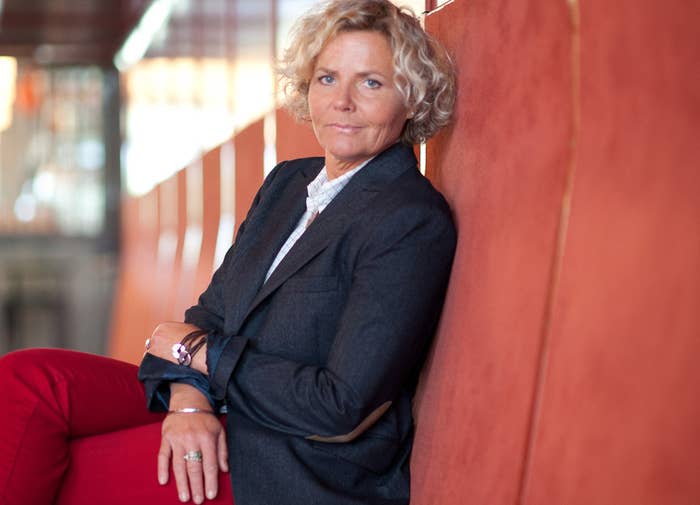
Anna Serner, CEO of the Swedish Film Institute, began insisting shortly after her appointment in 2011 that the SFI reach some serious gender parity goals with the films it decides to fund. With the support and cooperation of the commissioners who work for her, today there is now a near-even split among male and female directors, screenwriters, and producers whose projects are backed by the Stockholm-based group.
On April 25, Serner was on hand to deliver a lecture to an audience of mostly New York Film Academy students in Burbank, California, during which she tore apart the excuses for gender inequality used by executives in both the Swedish film industry and Hollywood. Her castigations seemed all too relevant: Just last week, TheWrap reported that Fox and Paramount have not hired a single woman to direct their respective slates of more than 20 upcoming movies.
“Male and female producers come to me, and they say, 'You know, Anna, it's only young men coming up showing [me] their portfolios,'” Serner said. “And it's like, Yeah, that's probably true. But if you want the best films, you should probably start looking for the women and not be so lazy, sitting and waiting for them, because otherwise, you won't get the best ones. Because otherwise, you will just have to get the ones [that know to show up], and that's not good enough.
“Then the producer gets really mad with me, actually. But that's the truth.”
Sweden produces far fewer films than the U.S.: Though SFI, a government-affiliated organization, is a significant source of financing, it greenlights only about 15 narrative films per year. But, like in the U.S., Swedish financial gatekeepers have also deflected responsibility for gender gaps in hiring. She said after the SFI announced in 2012 it was aggressively seeking female filmmakers, the qualified female filmmakers whom producers had previously said they could not locate began to materialize: “Suddenly, the producers and production companies found a lot of women.”
Part of the gender disparity problem, she said, is that women are discouraged from pursuing bigger creative roles starting in film school. Until they were specifically summoned, many filmmakers hadn’t considered that they could get funding. Additionally, producers who were previously inclined to put more trust in male directors began to work with female directors in the wake of SFI’s public appeal.
The institute doesn’t have a male or female quota, Serner said — individual commissioners decide which projects they like and then make the case for why those projects should receive funding. There aren’t separate male and female wallets at SFI, as it were; rather, the institute measures its gender ratio every month, and constantly keeps the targets in mind when making evaluations for new projects, maintaining a continuous vigil for unconscious bias.
“What [the SFI commissioners] do is that they usually come and are in love with a male project. … And they say, 'Oh, this is a fantastic project,” Serner said. “And then when you start digging into it, you realize it's usually not that fantastic. Usually no film project is that fantastic. ... So you start digging into that, and you realize [that] the male projects are usually not that good, and then you dig into the female projects the same way, and you realize they are not usually that bad. They actually start to become interesting.”
Combined, the public query for more film works by women, an increased scrutiny of all project proposals, and accountability found in the monthly data crunch have worked to achieve parity for SFI’s slate of films, she said.
In fact, SFI-backed female filmmakers have found remarkable success at the top film festivals, including winning two Crystal Bears at the prestigious Berlinale this year. Serner said, “When you look at this, you can say, 'Do we have maybe a problem with competence with male directors?'”
